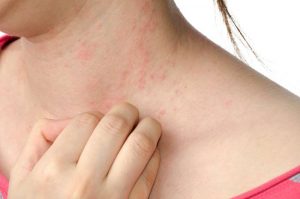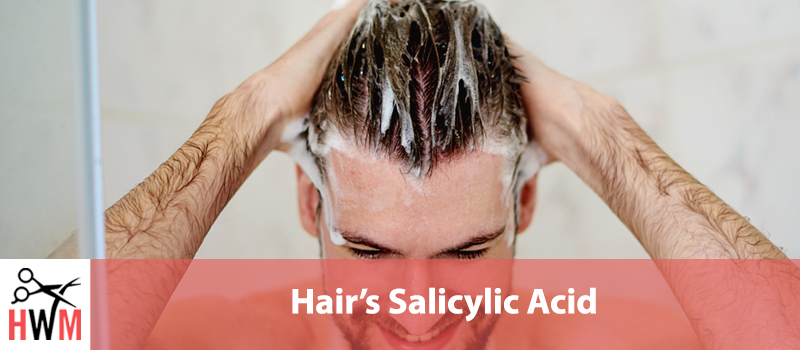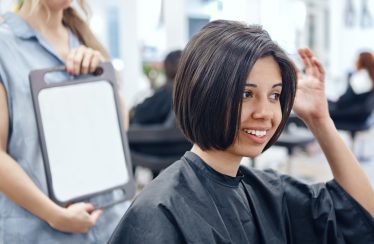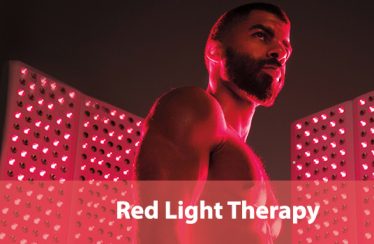Salicylic acid often comes across as a grooming wonder drug. It’s in soaps, cleansers, shampoos, and more. It gets printed on labels, each one touting a different list of benefits and uses.
But, if you’re serious about wanting to take care of your hair and scalp, it’s important to know what salicylic acid does, and when salicylic acid treatments are most likely to be helpful.
Salicylic acid shampoos are common, but using them properly, and in the right circumstances, is key to getting good results. Regardless of why you’re considering a salicylic acid treatment for your hair, information is key.
This guide will walk through the most common uses of salicylic acid, where it comes from, and why it works.
- What is Salicylic Acid
- Foods That Naturally Contain Salicylic Acid
- Common Uses for Salicylic Acid in Your Hair
- Steps to Take Before Trying a New Salicylic Acid Shampoo
- Common Side Effects
What is Salicylic Acid
Salicylic Acid was originally sourced from salicin naturally found in white willow bark. Salicin turns into salicylic acid as it is digested and taken internally it acts as a natural pain killer and anti-inflammatory.
Aspirin is another product that was created from white willow bark and salicin.
As we’ve worked with and used salicylic acid and salicin more, it’s been discovered that it’s a good treatment for a number of skin and hair issues, making it one of the few ancient medicines we’ve clinically proven effective.
Salicylic acid is a fairly mild acid, strong enough to break down some oils, but not strong enough to cause tissue damage except in unusually high concentrations.
Foods That Naturally Contain Salicylic Acid

Salicylic acid, and its precursor salicin, is good for you in food as well as topically. Although, admittedly, the concentrations found in plants and foods are much lower than the concentrations used in hair and skin treatments.
While you should avoid ingesting any treatment not specifically designed to be taken internally, you can get some benefits from salicylic acid in your food. As a bonus, most of the foods that contain salicylic acid or salicin contain numerous other useful nutrients, so there are plenty of benefits for your skin and hair if you add these foods to your diet.
Note: Some people are sensitive to salicylic acid, both in foods and in topical applications. If you are concerned you might be sensitive to salicylic acid, even if you’ve only used it topically, you should not intentionally add high salicylic foods without first consulting a doctor.
Vegetables
Most green vegetables contain a good amount of salicylic acid or it’s precursors. These compounds tend to concentrate just under the skin of vegetables like cucumber or zucchini, so avoid peeling these vegetables if you want to get the full benefit.
You can also get a good amount of salicylic acid in canned olives and canned mushrooms, although you lose a lot of nutrients into the canning liquid if you drain them.
Eggplant, seaweed, spinach, corn, and sweet potatoes also all have a greater-than-average amount of salicylic acid.
Fruits and Nuts
Like vegetables, many fruits and nuts have high concentrations of salicylic acid. Berries, like strawberries, blackberries, and blueberries, all have a good amount. So do bananas, tomatoes, stone fruits, lychee, and some melons.
Pumpkin seeds, peanuts, pistachios, brazil nuts, and almonds are also high in salicylic acid.
Most teas are also high in salicylic acid.
While incorporating salicylic acid into your diet will have less of an immediate effect than using topical treatments on your scalp and hair, it is an important part of a hair-healthy diet. Over time you’ll notice that your hair is stronger and shinier and that your scalp is less prone to developing dandruff or excess oils.
Common Uses for Salicylic Acid in Your Hair
Like many of the most common hair treatments, the secret to using salicylic acid for better hair health has less to do with the hair strand and more to do with improving the health of your scalp and hair follicles.
Tending to your scalp prevents scarring, which can damage your hair follicles and result in weaker thinner hairs, or even stop the hair follicle from working at all.
Treating your scalp well is also important to prevent irritations and blockages that damage hair follicles or cause ingrown hairs.
These are some of the most common uses for salicylic acid, and how each helps improve the look, feel, and even growth, of your hair.
Controlling Dandruff
Dandruff control is one of the main uses of salicylic acid.
Dandruff is the result of large dry flakes of skin that had gotten trapped on your scalp and in your hair, only to break free and fall out as your hair moves through the day.
Salicylic acid works to break down sebum build up on your scalp and in the pores on your head. Sebum, the oil your skin naturally produces, can act like glue for dead skin cells. Especially when you combine sebum with sweat or dirt or any other irritants, it acts like cement.
Once your scalp is irritated, it produces more sebum, which makes the problem worse.
Eventually, one of the results is dandruff building up on your scalp and in your hair, only to fall out onto your clothes. Dandruff can also be visible when it’s trapped further down on the strands of your hair, especially if you have a darker hair color.
The salicylic acid prevents the buildup of sebum and dead skin cells from occurring in the first place by counteracting the adhesive properties of the sebum.
Preventing the sebum from becoming glue does two things that reduce dandruff and benefit the appearance of your hair.
For one, it reduces the size of dandruff flakes while your shampoo works to eliminate the patches of dandruff altogether. Smaller flakes are less noticeable and more likely to fall completely off your head instead of getting caught in your hair or landing on your shoulders, chest, and back.
It also works to break up existing patches of dandruff, separating the individual skin cells and dissolving the sebum gluing them to your scalp and hair so it’s easier for you to wash the dry skin away naturally as you shampoo.
Cleansing Your Scalp
Salicylic acid also acts as a cleanser, one that lifts and dirt and other irritants while also tackling harmful bacteria.
While salicylic acid isn’t strong enough to be dangerous or damaging to most people’s scalp and hair, it’s plenty strong enough to cause damage to delicate bacterial cell barriers and dry them out. Dry bacteria are easier to wash away even when they don’t die as a result of the salicylic acid.
Salicylic acid is also one of the only ingredients in most shampoos and other topical hair treatments that is capable of getting into the pores of your skin instead of gliding over the top.
While most people think of pores as more involved in acne than the hair on the top of your head, pores are critical for your skin health everywhere on your body. Clogged pores are more likely to cause problems on your scalp than elsewhere since the skin of your scalp is thinner even than your face.
Clogged pores interfere with the normal function of your hair follicles. The skin on your scalp is also more likely to scar as a result of clogged pores since it’s very thin and has limited access to the nutrients, oxygen, and energy your skin cells need to heal without forming scar tissue.
Much like salicylic acid works to break apart and lift dry patches of skin that turn into dandruff, salicylic acid works to lift debris and clogs, and even dried sebum, out of your pores by breaking up the blockage and making it easier for your skin’s natural pressure to eliminate the debris.
Reducing Oily Buildup on Your Scalp
We’ve talked a couple of times now about how sebum can combine with dry skin and other debris and irritations to form a kind of glue binding the irritation to your scalp. Sebum can also form a layer of glue by itself, preventing cleansers from getting to your skin, and causing irritation on its own.
Salicylic acid works to release that sebum layer, stripping away the excess and allowing it to wash down the drain with your shampoo.
This is both beneficial and potentially irritating depending on your skin type and how much sebum you naturally produce.
If your scalp feels dry or tight after using a shampoo with salicylic acid, chances are it’s washing away too much sebum, leaving your skin without its natural moisturizer and protection. Your skin will replace the sebum fairly quickly, but it is more vulnerable to damage in the meantime.
This is a case of too little being as much of a problem as too much. Instead of skipping the salicylic acid shampoo entirely, try using a little less. You might wash with the salicylic shampoo first, and then a different, preferably moisturizing, shampoo for the second rinse.
There are also many concentrations of salicylic acid on the market. In shampoo, the most common concentration is 3%, but you can find 2% options if 3% is too harsh for your skin.
It’s important to find the right concentration for you, rather than just putting up with the temporary dry feeling. If you’re consistently washing away too much sebum your skin will start to produce more in an attempt to compensate.
Since the amount of sebum washed away has more to do with how your skin and hair responds to the shampoo than the amount of sebum present, producing more causes problems without effectively counteracting the drying effect of too much salicylic acid.
Controlling DHT
DHT, or dihydrotestosterone, is a naturally occurring variant of testosterone that is necessary for a lot of body processes, including growing facial and body hair.
However, it has the opposite effect when too much DHT builds up on your scalp.
Instead of encouraging hair growth, as it does on your face, DHT on your scalp thins the hair strands produced by your hair follicles and can even stop your hair follicles from working at all.
We don’t entirely understand why DHT affects different types of hair follicles so differently, but it has been shown multiple times that it does. DHT is thought to be one of the factors at play in genetic varieties of baldness and hair loss.
Although salicylic acid has not been studied or approved as an effective hair loss treatment on its own, it has been shown that DHT can build up in the sebum in and on your scalp. Since that sebum comes into direct contact with your hair follicles, removing high DHT content sebum has been theorized as a possible aid in preventing hair loss.
We’ve already discussed how salicylic acid aids in breaking up and cleansing excess sebum, controlling the level of DHT is simply a happy side effect of the same function.
Treating Psoriasis and Other, Related Skin Conditions on Your Scalp
Scalp psoriasis is painful, stubborn, often distressingly visible, and can become chronic. Not only is the thick red itchy skin resulting from psoriasis uncomfortable, but it can also cause scarring issues that interfere with healthy hair growth.
Styling and otherwise caring for your hair is also more difficult when you’re in the middle of a psoriasis attack. Fortunately, there are plenty of shampoos and products that are designed to help calm the irritation while soothing the symptoms.
The salicylic acid aids with breaking up the heavy patches of skin in much the same way it helps with dandruff. It also potentially aids in controlling pain and inflammation since it’s the same active ingredient that made willow bark tea an effective pain treatment for centuries, and that is behind aspirin’s effectiveness.
Look for shampoos that combine salicylic acid with coal tar, lactic acid, or sulfur. Those ingredients all help with reducing the symptoms and appearance of psoriasis.
Of course, if you’re in the middle of an outbreak or have not yet consulted a dermatologist about your skin and scalp, the best thing you can do for psoriasis is to talk to a dermatologist or doctor about the best treatments and preventive measures for you.
Helping Hair Loss Treatments
This last possible effect is still being studied and is not fully investigated or established yet. However, the possibility that salicylic acid might aid in hair loss treatments is a promising one.
The idea is that, because salicylic acid penetrates deeply into your skin and is capable of going into your pores, it might help to carry the active ingredient in topical hair loss treatments like Rogaine further into your skin, increasing its overall effectiveness.
Combine this with salicylic acid helping to control DHT and the fact that your hair grows best when your scalp is clean and un-irritated, and this looks like a great way to increase the effectiveness of topical hair loss treatments.
Steps to Take Before Trying a New Salicylic Acid Shampoo
Since salicylic acid can cause allergic reactions and irritation in a small percentage of people, it’s important to make sure you’re taking the appropriate steps to keep yourself safe before you try a new product.
Do a Skin Test
Put a small amount of shampoo on a quarter-sized patch of skin, preferably on your hand or arm so you can easily see it. Since shampoo is meant to be used and washed out quickly, and rapidly diluted by water, you should only leave the shampoo on your skin for a few seconds, no more than 30, and wash the shampoo off.
Watch your skin the whole time the shampoo is on your skin. If it starts to redden or show any signs of a rash, to burn, or to itch, wash it off right away and don’t use that shampoo.
Ideally, your skin should show no reaction. A slight tingling or a very mild burning sensation might be okay, but only if your skin doesn’t redden at all in the process.
Avoid Cuts, Abrasions, and Other Skin Irritations
Avoid using salicylic acid if you have cuts or abrasions on your hands or scalp, or anywhere the shampoo would be likely to run as you rinse your hair.
The main reason to avoid abrasions is that the salicylic acid can be highly irritating, slowing down healing and stinging or burning when it gets into those small wounds.
You should also avoid applying salicylic acid to warts and moles.
Tell Your Doctor
Shampoos with salicylic acid are more than just shampoo, and you need to tell your doctor that you use them.
Salicylic acid, even in topical applications, can interfere with some medical tests, so it’s important your doctor knows that you’re using it, and all the products you use that contain it, so they can accurately access your test results.
Common Side Effects

Like most skin and hair products, there are some side effects that can come with using salicylic acid that you should watch for.
Mild Skin Irritation
Mild skin irritation on your scalp, usually feeling dry, or seeing an increase in dandruff and flaky patches instead of a decrease, is the most common form of skin irritation that comes with salicylic acid.
It’s also common for your scalp to temporarily redden or turn pinkish immediately after using salicylic acid, but it should resolve quickly.
All of these symptoms say that you’re using too much or too strong a concentration of salicylic acid. Try a weaker concentration or use the product less often. If the problem persists, discontinue use and consult a dermatologist or doctor.
Dry/Tight Scalp
If your scalp feels dry or tight right after your shower, chances are your concentration of salicylic acid is too high. This is a common sensation when the salicylic acid has washed away too much of your natural sebum as your pores try and tighten and close to protect your skin from damage until its normal moisture barrier has been restored.
Usually, this symptom also passes fairly quickly, within an hour of using the product, but it is still an indication that you should be using less of the product, or should switch to a shampoo with lower salicylic acid concentration.
If it lasts for more than an hour, gets worse, or is particularly severe, you should discontinue use and consult with a doctor or dermatologist. If the symptoms are particularly severe it’s worth calling your doctor and asking whether your symptoms are severe enough to warrant coming in to get checked over.
Signs of an Allergic Reaction
Since allergic reactions are possible with salicylic acid you should know what to look for. Even if you’ve been able to use products with salicylic acid before, new allergies can develop over time.
Persistent Redness
If your scalp or hands turn red and stay that way for more than a few minutes that can be a sign of a mild allergic reaction. Wash the area thoroughly in clean water and consult with a doctor for follow up steps.
Intense Itching
Some itching or dryness is common with salicylic acid, but if it’s more than a mild discomfort, it starts immediately after you apply the product, or persists for more than a few minutes after you wash the salicylic product away, you might be having a mild allergic reaction.
Discontinue using the product and consult a doctor before using it again.
Hives or Peeling
Hives and peeling are both signs of mild and moderate allergic reactions. Discontinue use, rinse the area thoroughly, and consult a doctor for next steps.
Anti-histamine creams or pills might also be useful in the immediate aftermath of a reaction that causes hives or peeling as long as the irritation isn’t too severe.
Conclusion
Salicylic acid is a wonderful aid to skin and hair health. It can help create the conditions your scalp needs to grow hair in quickly and thickly. By cleansing your scalp, lifting and removing excess sebum and DHT, and removing irritations, dirt, and debris from your pores, salicylic acid encourages healthy, attractive hair.
It can also be used to control unwanted hair problems like dandruff or scalp psoriasis, reducing the irritation and helping to control symptoms to leave you more comfortable and healing faster.
If you’re serious about healthy hair and a healthy scalp, salicylic acid is a great tool, although one that needs to be used with care.




